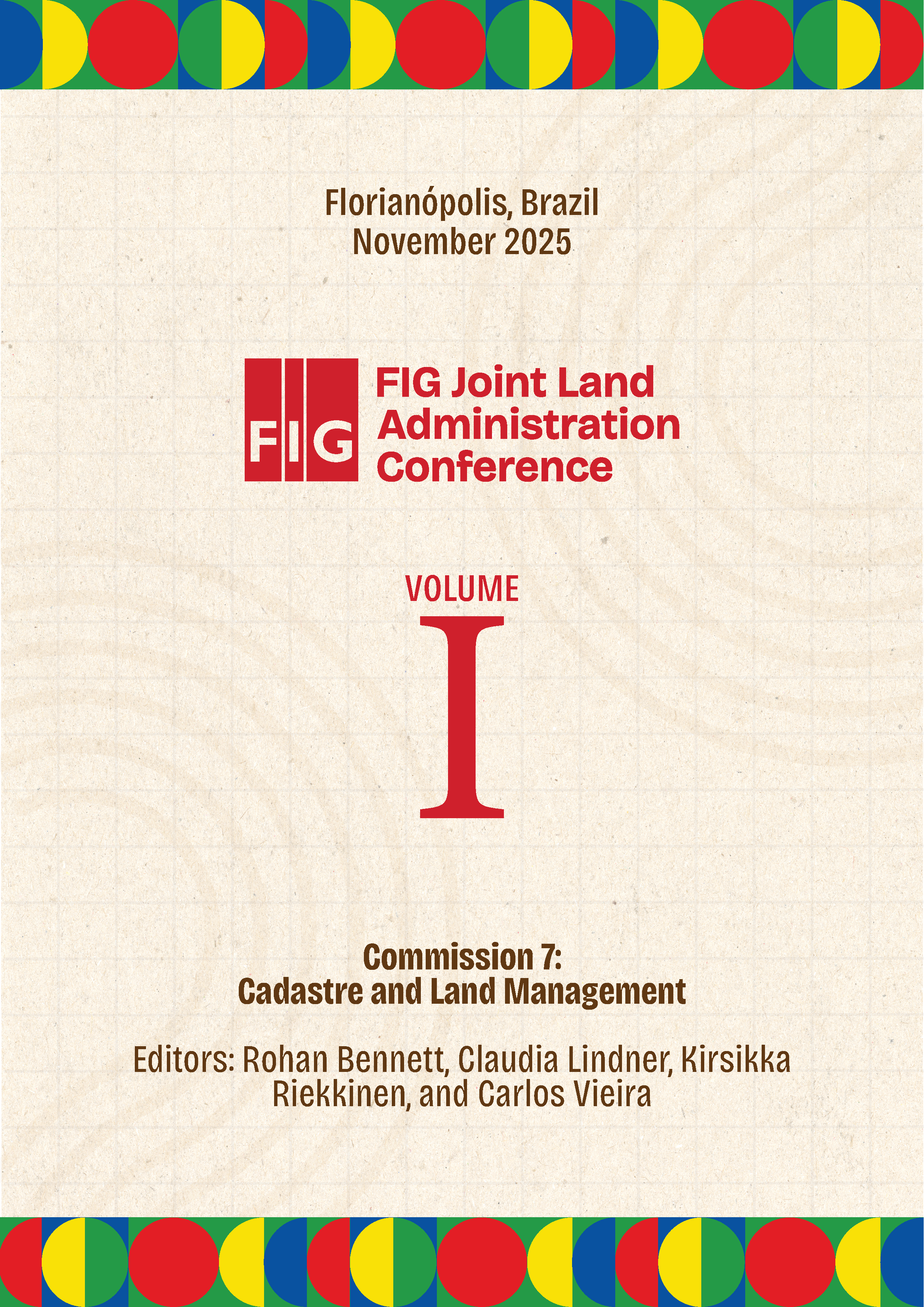AI Opportunities for Cadastre in Support of Integrated Land Administration
Palavras-chave:
Multipurpose Cadastre, Artificial Intelligence, Land Administration Domain Model (LADM), Cadastre 3D, Land AdministrationResumo
Artificial intelligence (AI) is creating unprecedented opportunities to modernise land cadastre systems, transforming them into dynamic, integrated tools that support sustainable development and climate resilience. While traditional cadastral data management has often relied on manual, fragmented processes, AI offers scalable and adaptable solutions that significantly enhance efficiency, automation, and interoperability. These advancements are particularly crucial amid global challenges such as rapid urbanisation, socio-environmental vulnerabilities, and the pressing need for adaptive responses to climate change. The transition to 3D cadastre further amplifies this complexity, requiring sophisticated tools to maintain updated databases and adhere to international standards, such as the Land Administration Domain Model (LADM). While these advances are necessary and welcome, they also demand new tools and approaches to overcome the limitations still present in traditional cadastral systems. In large, diverse countries such as Brazil, structural inequalities between municipalities in terms of population size, institutional capacity, human resources and technological infrastructure represent a key barrier to universalising reliable, integrated land administration. Many local governments lack the means to maintain up-to-date cadastre databases or implement digital tools to support decision-making and policy design. In this context, AI emerges not only as a technological opportunity but also as a potential enabler of inclusion. It can enable municipalities with limited resources to automate key processes, reduce operational costs and provide better public services supported by accurate land data. This paper explores how AI technologies, including Machine Learning (ML), Deep Learning (DL), Computer Vision, and Large Language Models (LLMs), can revolutionise the multipurpose cadastre. It focuses on applications aligned with LADM and cadastre developments, highlighting opportunities for automated feature extraction, semantic integration, 3D modelling, and intelligent interaction with cadastral information. Despite significant potential, challenges persist, particularly concerning data quality, standardisation, interoperability, and the ethical implications of AI deployment. Addressing these issues through transparent, inclusive, and ethical practices is vital to fully realise AI's transformative impact on land administration, fostering more equitable and climate-resilient land governance in the 21st century.


